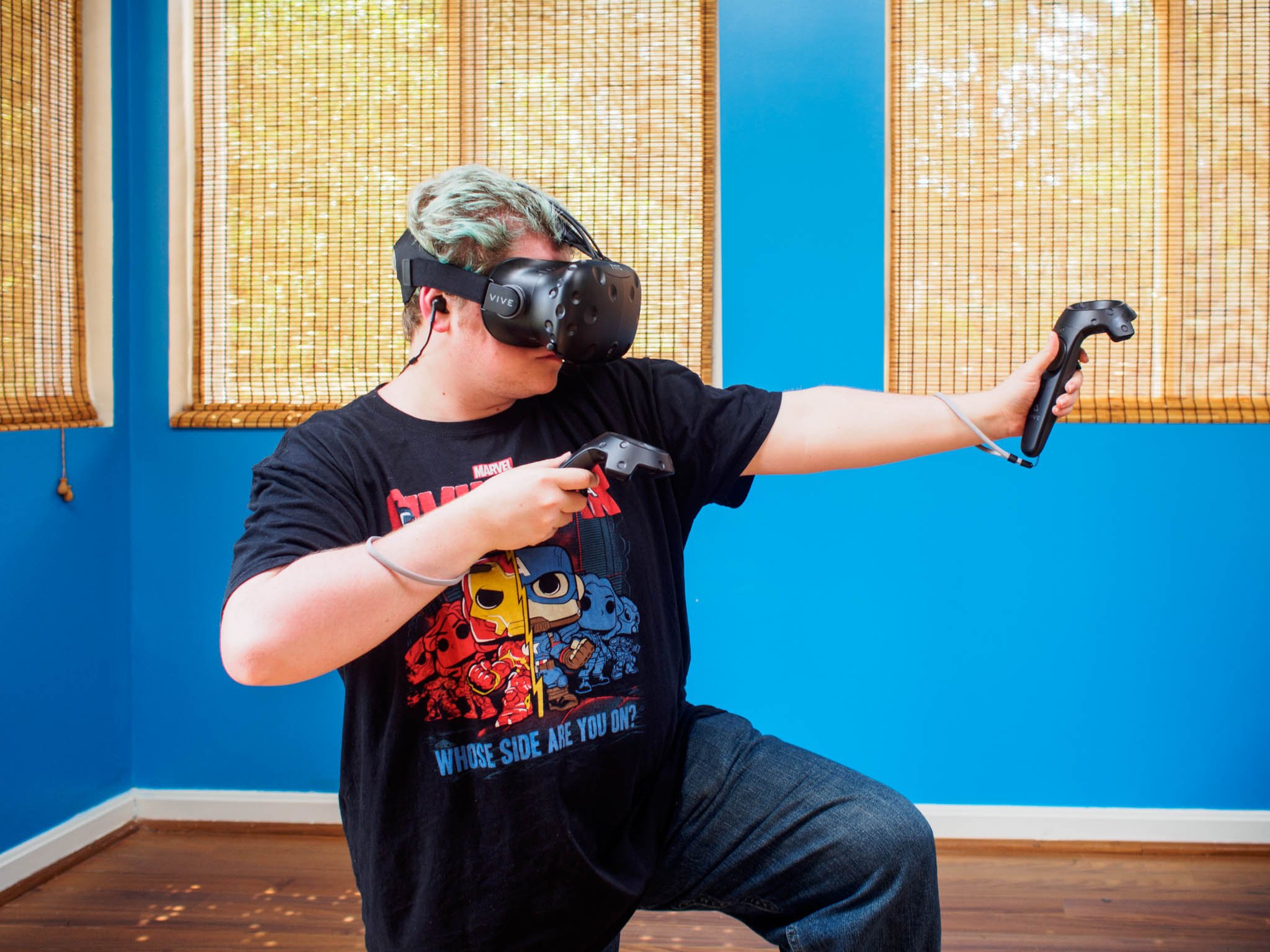The truly fascinating thing about virtual reality right now is how many things fall under that umbrella. It's not one specific experience, but instead a collection of ways to experience something as though you're somewhere else. That can be as passive as spinning in a circle and seeing a photo that exists all around you, or it can mean crouching down in an empty room because your eyes see a rock that isn't there and you need to check your ammo count before you unload on the robot that pinned you down. What we're talking about today is the more intense flavor of VR experiences, the brainchild of HTC and Valve, HTC Vive.
Having used an HTC Vive every day for the last three months, it's time to take a look at how this hardware has held up, how the software has improved, and where Vive sits on the pile of VR headsets available to consumers today.
Curious to see our thoughts on Oculus Rift after three months? We've got you covered!

Hardware — strange alien artifacts
It's easy to look at the HTC Vive and wonder if you're looking at a developer kit. This is not a kit built to show off design prowess or win any style awards. HTC clearly chose function over fashion with their design, and for the most part it works. You get a headset, a pair of controllers, a pair of lighthouses, a sync box for connecting to your PC, and a long three-in-one cable to connect from the sync box to the headset.
That long cable connects to the top of the headset, and runs from your eyebrows to your feet and off to your PC. The three-in-one cable connects power, HDMI, and USB3 to the headset, and you can see all three cables as they run up to the headset since they sit side by side in an almost flat line. That almost flat cable adds a little to the weight of the headset, and has some real problems with bunching and twisting as you use the headset. The rubbery texture causes the cable to bunch on your head, making it difficult to adjust the headset when it's on your head. The twisting happens as you use the headset a lot, spinning around as you play games. There's not much you can do about that particular problem as long as cables are a requirement for use, but the bunching on the headset can and probably should be addressed.
The headset itself is something unique in the world of VR headsets. It uses a fairly standard three strap system to hold the headset in place, but everything beyond the eye gasket is velcro and elastic. Fitting the headset to your face is a matter of pressing your face to the headset and tugging on the straps until it feels secure, which works well enough for the sides but is a little tricky up top. That three-in-one cable lays on top of the third strap, which means you have to pick the cable up and adjust the strap with one hand. The inside of the headset is large enough to comfortably hold a large set of prescription glasses, and the unique Fresnel lenses used in the headset can be quickly adjusted into place with a pair of knobs on the outside of the headset.
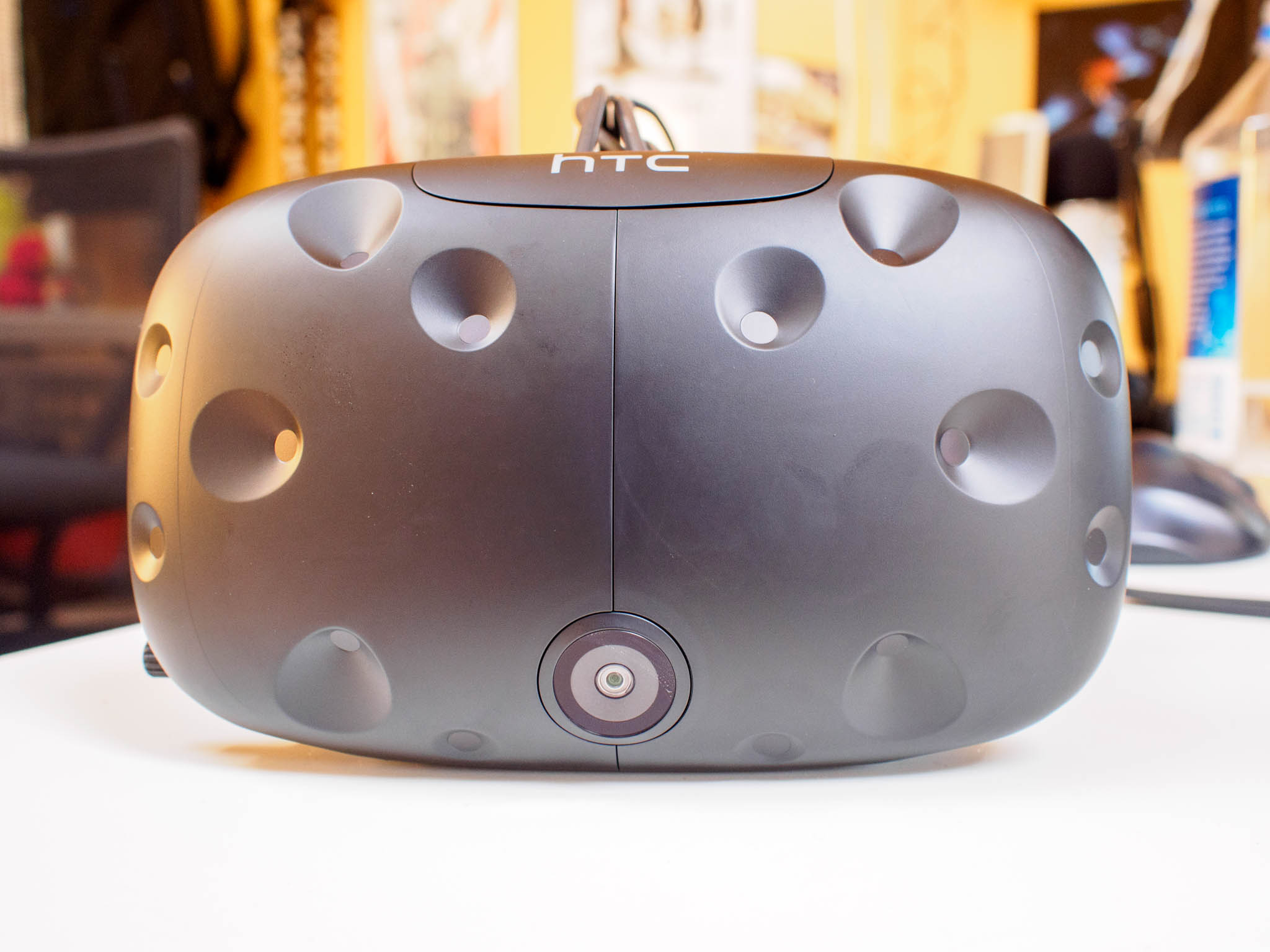
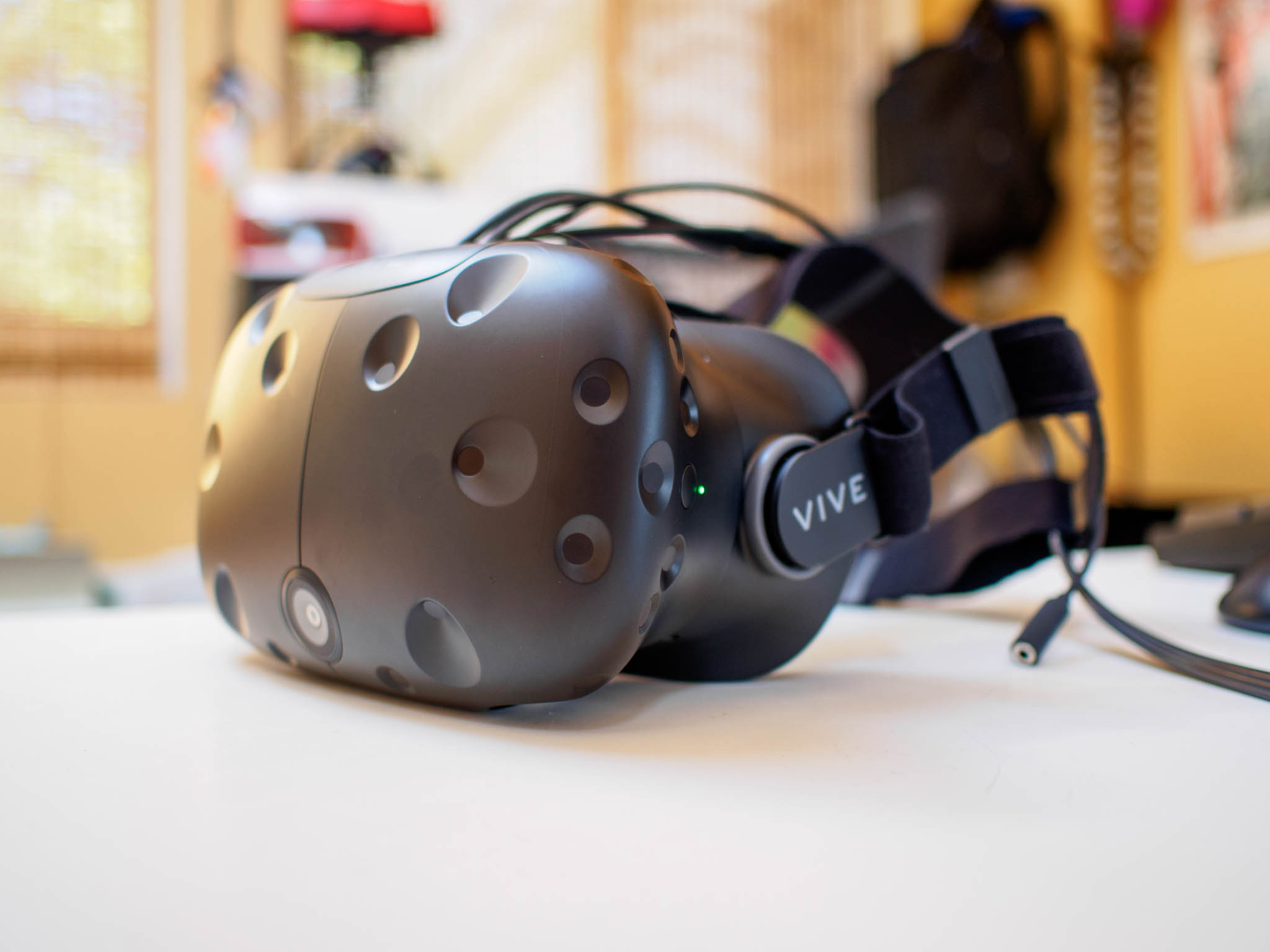
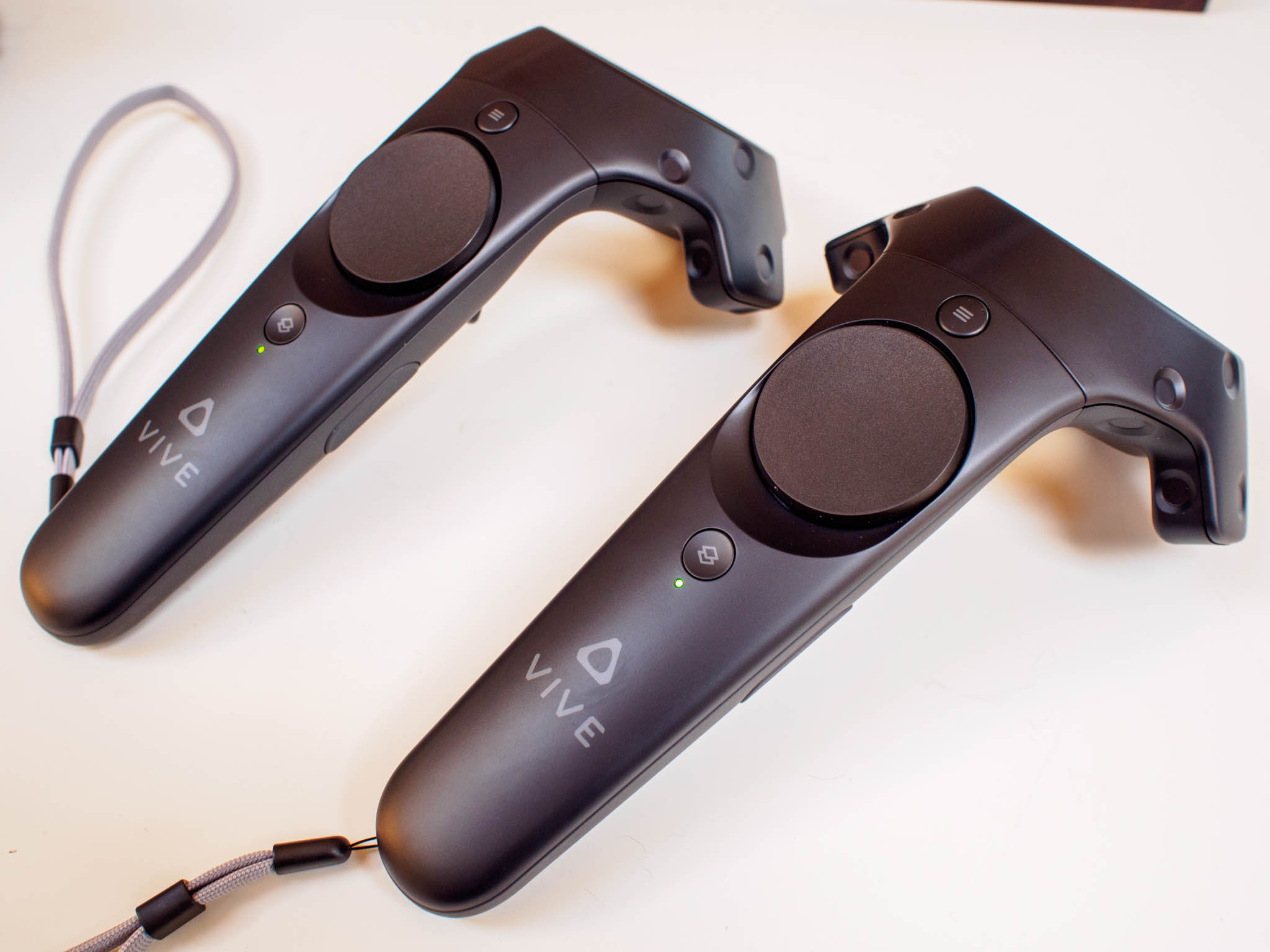


Vive uses Infrared sensors called lighthouses, which are mounted in the corners of your playspace, to tell your computer where you and your controllers are in the room. As soon as you put the headset on, you can see the controllers through the headset because they are also being tracked by the sensors. As you move your hands, the controllers move precisely in space with you. There's no lag, no stuttery animation, it's as though you're looking down at the real controller through your headset. It's impressively functional, and without a doubt the most important part of making the whole Vive kit feel like a complete thought.
All the latest news, reviews, and guides for Windows and Xbox diehards.
Setting up a Vive is a bit of a process, making it pretty far from portable for most folks.
HTC's controllers for the Vive are excellent. If ever there was a spiritual successor to the Wii controllers, these are it. They work well for every hand size, offer functional wrist straps to keep you from throwing the oddly shaped wands into someone's face. The button layout is intuitive, making use of the touchpads that didn't quite land with Valve's Steam Controller, and the battery life is great. Each controller will get you around 7 hours of activity in game, and easily a week on standby. These controllers needed a recharge once every three days, and usually only charge for an hour. These controllers are what make Vive special, there's no doubt about it.
When it all comes together, your Vive is going to require nontrivial resources to fully function. Three power outlets, plus the HDMI and USB3 port on your PC will always be occupied. You need a minimum of three feet around you so you don't accidentally smack something with your controllers, but you really want something like ten feet around you so you can enjoy the games that let you actually walk around and reach for things. The lightboxes also need to be placed high so the infrared light can bathe the whole room, which for many people means mounting the boxes to walls. It's not a requirement to use the included wall mounts and drill holes, but it's clearly the recommended option. The bottom line is setting up a Vive is a bit of a process, making it pretty far from portable for most folks.
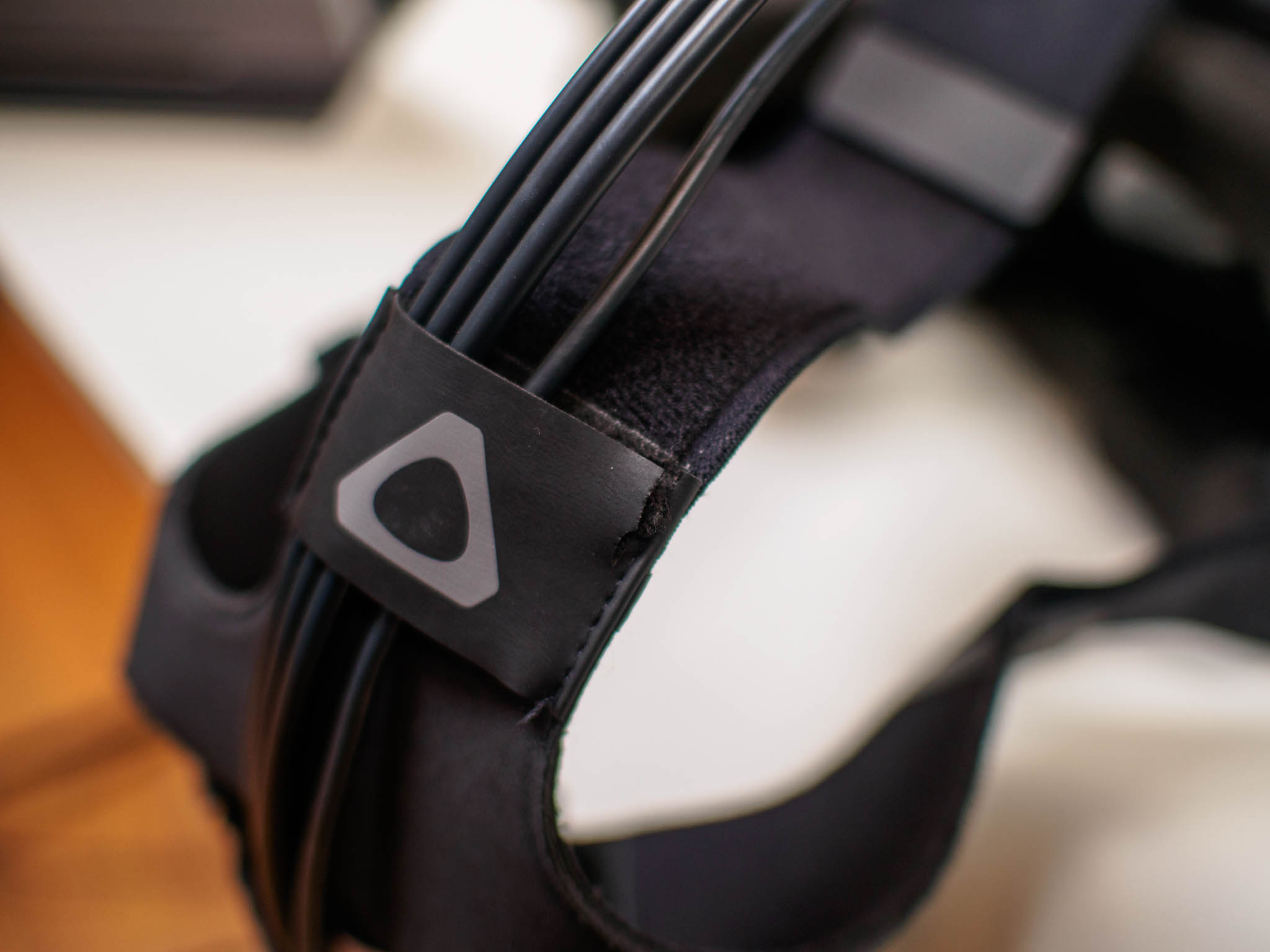
Over the last three months this HTC Vive has been worn by 157 people in three states. It has been connected to 6 different PCs, and has been set up, broken down, shipped, and set up again a total of five times. To say this Vive gets a little more use than the average HTC Vive is a bit of an understatement, but this headset is really starting to show some wear and tear as a result. The strap for holding the Vive cable on your head has torn a little, the elastic straps that hold the headset on your head look worn, and the original three-in-one cable needed replacing recently after the HDMI cable was stressed to the point of no longer functioning. This headset has taken a beating to be sure, and HTC's warranty took care of the damaged cable, but it's fair to say this particular headset looks well used after three months.
Overall, the headset strap system is the one place on the Vive in need of an overhaul. It's clear where the decision to use this system came from — you move around a lot in Vive and that headset needs to stay in place while it happens. When compared to every other headset available today, the Vive feels the most secure on your head as you move around. You can basically do a barrel roll on the ground and the Vive headset won't go anywhere, and the same can't be said for the competition. At the same time, the headset straps are difficult to work with and look like they'll need replacing for many daily users after a year or so of use.
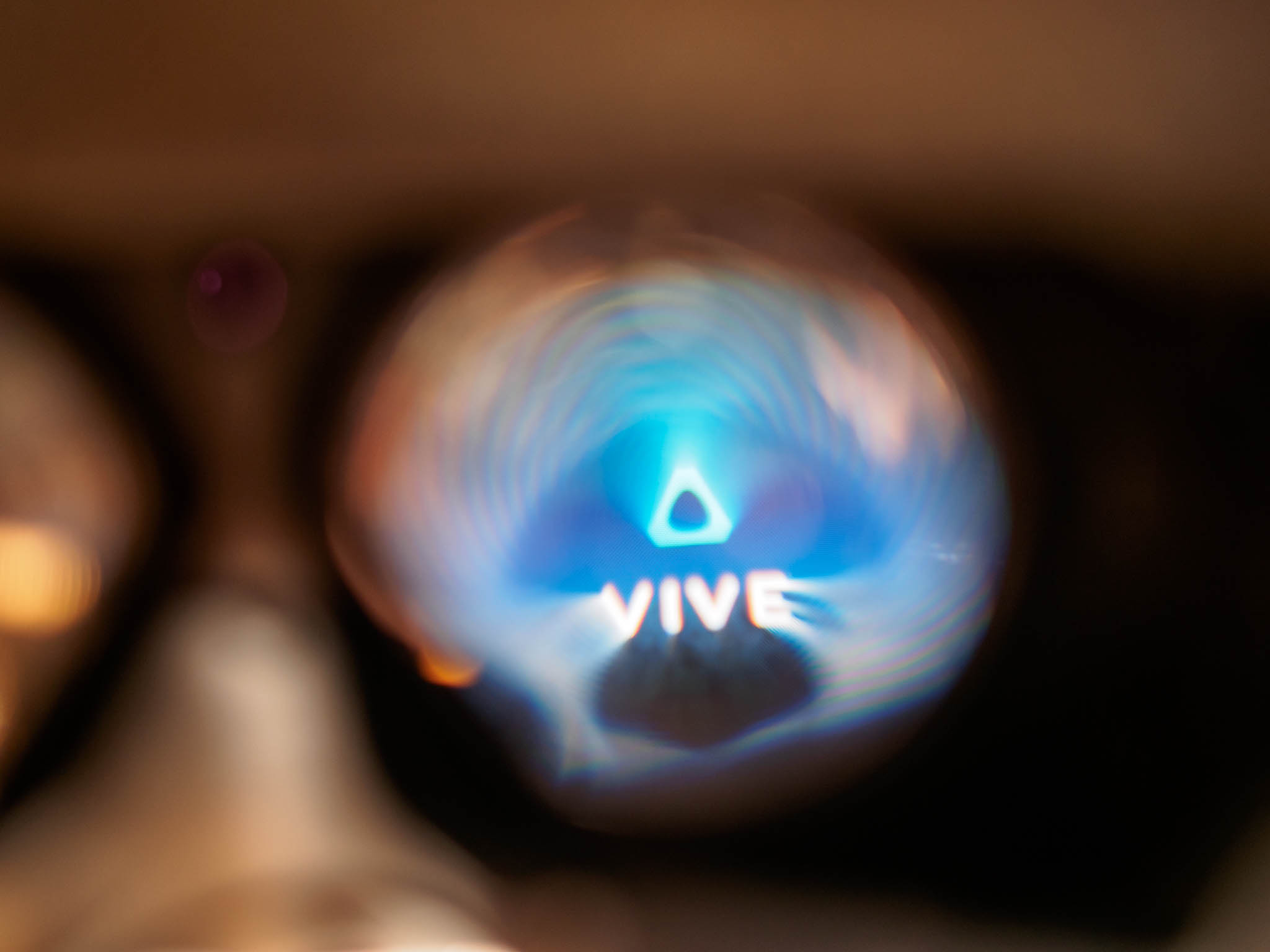
Software — the clumsy Holodeck
Imagine you've got Steam floating in a window in front of you, and from your hand a laser pointer shot out and let you choose what you wanted to play by pulling the trigger on whatever the dot landed on. Imagine a floating window with large tiles for all of your games, and a menu system that allowed you to scroll with your thumb on a touchpad until you got to the game you wanted. Imagine you're standing out on a breathtaking ledge at the top of some kind of future spire, and your games floated on virtual shelves in front of you as if waiting for your command.
Now imagine a VR system that has all three of these mechanisms in place for choosing a game that assigns no priority over the three systems and just sort of lets the user figure it out for themselves. That's basically SteamVR, and while Valve should be praised for making it so Steam veterans and those new to the Steam ecosystem can choose between their navigation interfaces, tossing all of this at a user all at once is a little confusing. Pressing the Home button on your controller brings up the larger VR-specific menu by default, unless you click away from that menu to see what a friend is playing or respond to a message. It's all fine once you get used to it, but the SteamVR tutorial stops once you have a rough idea of how the controllers work and that's probably not the best place to stop.
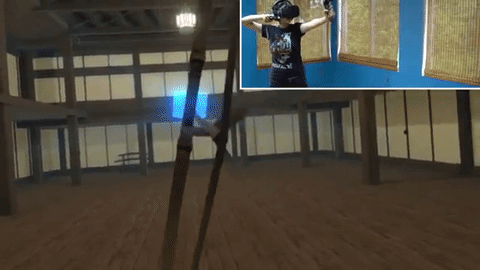
For example, the front facing camera on the Vive can be used in three incredibly well done ways. You can set Vive to show you the real world when you reach past the bounds of the virtual space, you can set the camera to float next to your controller so you can see exactly what is happening in the real world, and you can double-tap the Home button to see everything in an almost Terminator Vision kind of way. All are fantastic and have their place, none of them get a real explanation in the tutorials.
Despite this, SteamVR gets a ton of stuff right off the bat. The ability to quickly dump out of a game and back into VR through the Home button, immediate access to your Desktop environment when you need to see something on your PC, and battery readouts are all incredibly well done. Customization is amazing as well, allowing you to apply community-made skins to the lighthouses, controllers, and even the outer virtual environment as you see fit. It's a great setup, and all of that is before you even get to playing an actual game.
Of all the headsets available now, Vive is consistently great about delivering a quality experience.
SteamVR has well over 200 titles available now, and on multiple occasions there's been some great Steam sales to encourage new VR users to try something new. You're frequently rewarded by trying something new, since developers are really going all out when it comes to trying new things inside of the Vive environment. You can experience what it's like to play Tennis as a selfie-obsessed unicorn, defeat wave after wave of holographic enemies Katniss-style, destroy a kitchen in repeated failed attempts to make soup, and so many more crazy wonderful experiences. Vive may not have been as strong as the competition out of the gate when it came to launch titles, but there's a massive selection of amazing things available now. We're also starting to see major title support with Fallout 4, Doom, and Star Trek: Bridge Crew on the way. It's a pretty great time to be interested in room-scale VR!
There's also something to be said for performance consistency. Of all the headsets available now, Vive is consistently great about delivering a quality experience. The chance for nausea is either nonexistent or you're warned well in advance that new users should be cautious. Most of this is due to the community that has formed around the games themselves, which is possible through Steam. Users are accustomed to dialogue with smaller developer teams, and that's what most of the VR world is right now. The communication alone makes the games better, and through that the whole experience in the headset improves.
Aside from being confusing to new users, there's not much in need of change in SteamVR. Valve has done a great job building an interface that is simple enough to quickly figure out. Users can get exactly what they want out of that experience, which occasionally means stumbling on a new feature and wondering where it has been your whole life.

Experience — an ocean of expressions
As a single user it's fine to say 157 people have used your headset, but trying to use the data from those experiences as evidence of anything is a little tough. After all, there are HTC Vive demo stations that see roughly that many people in a single day. That having been said, this small sample group revealed a nearly universal reaction to their first time in a Vive.
"That looks weird and uncomfortable, why would you wear that?"
"I feel like I'm going to step on these cables."
"WHOA, I can see the controllers!"
"HOLY SHIT THIS IS AMAZING"
"How much does this cost, I need one right now."
The truly fascinating thing about this set of reactions is how similar they were no matter who used the headset or what was being played. Artsy people loves being able to draw in the entire world through Tilt Brush, adrenaline junkies screamed and laughed and punched their way through The Brookhaven Experiement, and watching someone with HOTAS controllers really get into Elite: Dangerous as though they were really in a spaceship is incredibly fun. Rooms filled with people have been left doubled over with laughter as the person in the middle throws paper airplanes into the faces of robot overloards. Each of these experiences are emotional in ways you don't get with traditional video games.
In the end it comes down to immersion. Vive offers a level of immersion currently not available anywhere else. If you have the right amount of space for it, a trip into Vive can be entirely unique. That space can sometimes be a big ask, but it's incredible to see how naturally most players step into the headset and start experiencing this other world around them. For users who are fully aware of the way all of the parts work, it's easier to see what makes that "magic" feeling for many. Sometimes it's a hyper-realistic spatial audio setup that tricks you into thinking the bad guy really is right behind you. Sometimes it's the way the vibration in one controller ramps up to match the feeling of a bow being pulled. It's a great balance, and frequently leads to sweat-soaked users players pulling the headset off and being amazed by the experience.
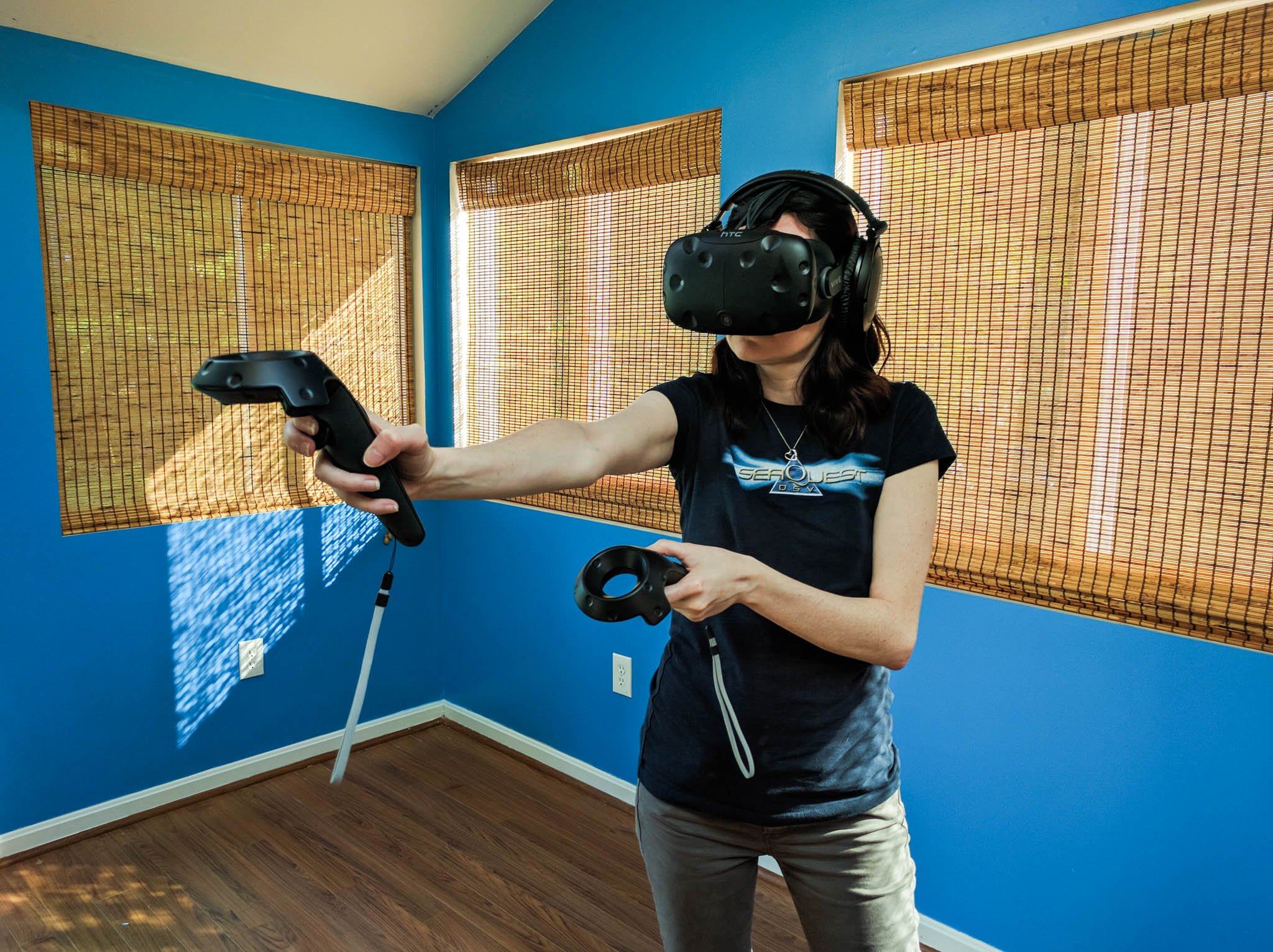
Three months later — is HTC Vive worth it?
HTC and Valve have done two big things right with Vive: they delivered a complete experience out of the gate and they're leveraging a community environment that routinely ends in better games for everyone. HTC's kit is the most expensive of the VR kits out there today, but it's also the most feature complete. Out of the box, HTC Vive will offer you an experience you can't get anywhere else, and that's significant.
If you're the user who knows VR is what you want, Vive is undoubtedly for you.
At the same time, HTC's build quality raises some questions. As a first generation product focused on creating new experiences, the bulbous design feels a little like a developer kit still. That feeling quickly does away when you're in the headset, but getting there includes a lengthy setup and instructions that are nowhere near as clear as they should be once you're actually in the headset.
There's also something to be said for convincing a new users they need this experience in the first place, and HTC does that better than most. The company has completely adopted Mixed Reality video as a way to show off what their users are seeing to the rest of the world, and when you combine that with a massive effort from HTC to drive from city to city and show this experience to as many people as possible you quickly gain a huge following. HTC is doing a lot of things right in this regard.
If you're the user who knows VR is what you want, Vive is undoubtedly for you. If you're new to the VR world and want to quickly dive in and get started, Vive is well worth considering but may be a little confusing at first. The best part about using a Vive right now is there's no waiting for something extra to improve the experience in a couple of months. It's already great, and you're going to want to share it with everyone you can.

Russell is a tech nerd who chases the best of everything, from phones to game consoles to laptops and everything glowing or beeping. He's the Former Managing Editor of gaming content for Mobile Nations and can be found contributing to all of the Mobile Nations sites. Reach out on Twitter!
